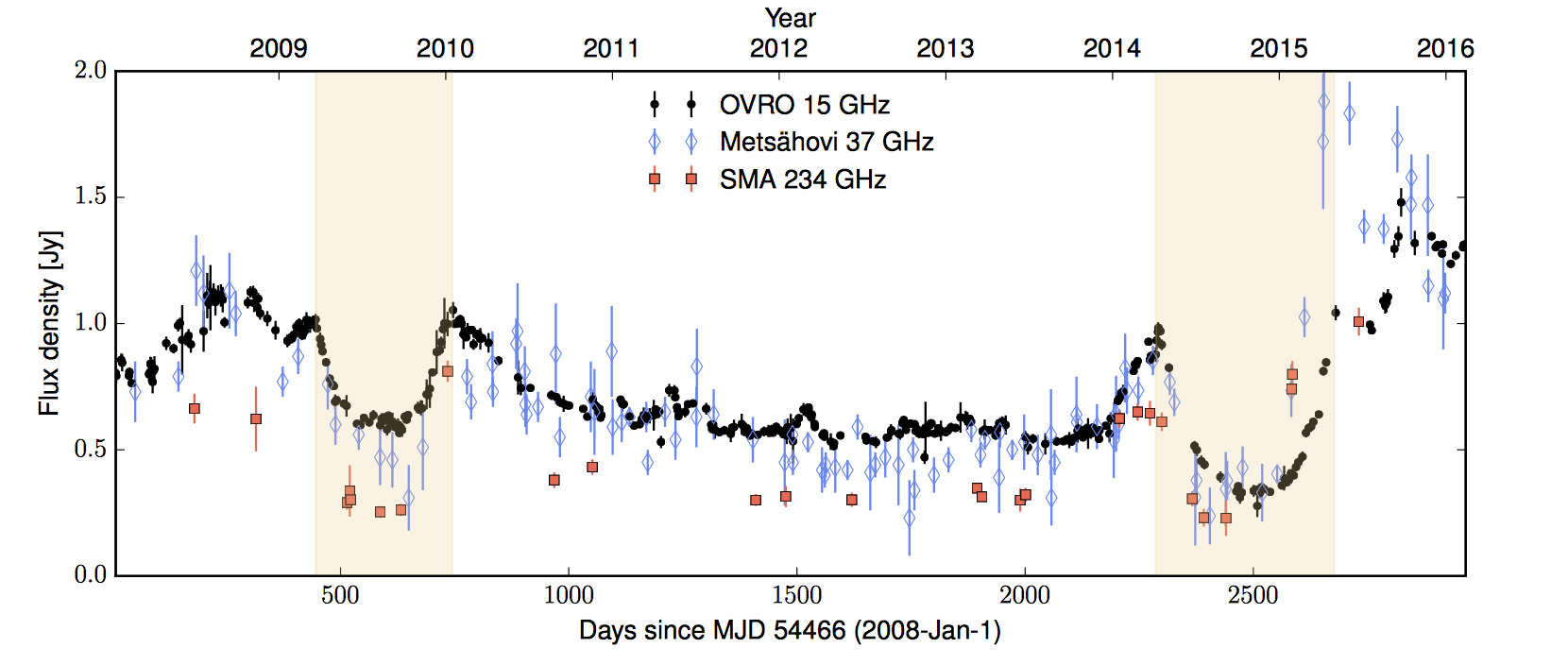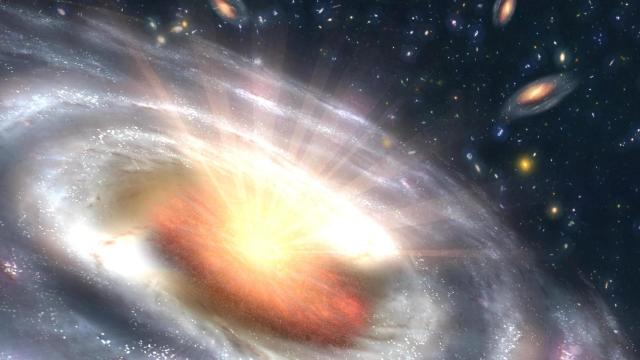“I don’t know!” is among the most scientific phrases you can utter. “I don’t know” is the reason you do science, after all. “I don’t know” means more funding, more jobs, more mysteries, and ultimately, more “now I know”s. Astronomers have now uncovered an “I don’t know” that might become an important tool to study even more “I don’t know”s.
Cool space art (Image: NASA)
If that doesn’t make any sense, here’s the real deal: An international team of astronomers found a series of strange shapes in data coming off of distant sources of radio waves. They hypothesise that the dips come from some mysterious sources passing in front of the light, maybe black holes or the centres of clusters of stars. If their hypothesis is correct, they think they may have found a new way to probe those sources — sources with masses difficult to observe by other means.
These strange dips “may thus provide a powerful new method of exploiting gravitational lensing” for astronomy research, according to the paper published last week in the Astrophysical Journal.
The researchers first noticed an increase and dip in the amount of light they observed back in 2009 coming from a distant source of radio waves. The pattern didn’t have a preferred wavelength (essentially, it didn’t have a preferred colour), and the light returned right back to where it was in 2010, making a volcano-like cross section shape on a graph.

The 2009 volcano shape falls within the beige band (Image: Vedantham et. al., 2017 via the arXiv)
They first thought that these shapes could have come from extreme scattering events, or clouds of charged gas, but the lack of preference for a dipping colour clued them into the fact that they might be looking at some all-new source.
After identifying the mystery, the researchers went looking to ensure that they weren’t just looking for some strange flares of light, and found another 10 of these volcanoes in seven radio sources after sifting through nearly a thousand. That makes these dips especially rare.
The hunt and data analysis led the researchers to make their hypothesis: Maybe their observations come from objects between a thousand and a million times the Sun’s mass, like black holes. The volcano shape would come from gravitational lensing, the source bending the light from its strong gravitational field changing the shape of space. They had a few reasons: “A hallmark of gravitational lensing is its achromaticity,” its lack of preference for a colour when it does its dimming, the authors write.
Given that the authors have only presented a hypothesis, they also needed to give other researchers a way to prove it wrong: For example, further monitoring might give more information about the lens. More of these volcano shapes in the light emissions of further away sources, and they should behave the same on fast radio bursts as they do on quasars.
There are all sorts of things these sources might be able to help scientists understand, such as the mass of the universe or better constrained models of dark matter. “The failure to associate dark matter with an elementary particle has revitalized interest in the idea that there may be a large population of primordial black holes” left over from the Big Bang, the authors write. Further monitoring distant sources of radio waves, combined with advanced observation techniques “may provide a new and sensitive approach to constrain this putative population”.
But remember, there’s a whole lot of stuff scientists don’t know — so much that they use the unknowns to try and understand other unknowns.
[ApJ]
